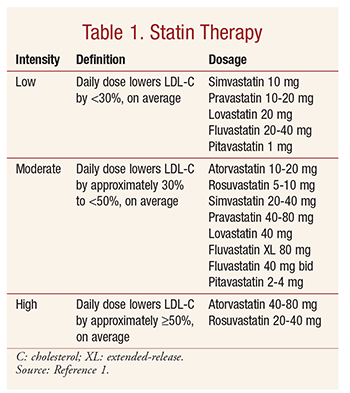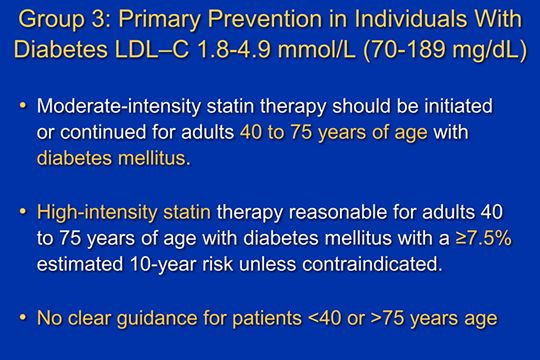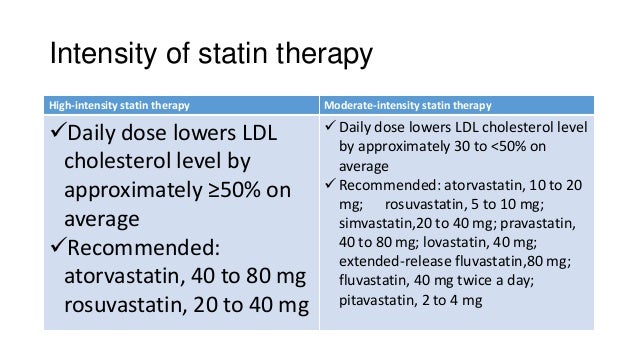

Multivariable models included other baseline covariates ( Table 1), specific ASCVD conditions ( Supplementary Table 1), and year of statin initiation for statistical adjustment. For each model, we ran simple and multivariable regressions, respectively, and reported unadjusted and adjusted point estimates (odds ratios or incident rate ratios ) ± 95% confidence intervals ). We used linear regression to examine mean changes in LDL-C, and negative binominal regression models to examine rates of daily-dose and intensity-level titrations from baseline to follow-up. We used logistic regression models to examine the odds of HIST prescribing at treatment initiation, attainment of LDL-C < 100 mg/dL or < 70 mg/dL, and statin medication adherence (PDC ≥ 0.80). For these models, time was included as a continuous, independent variable.įor all outcomes, we examined differences by age ( 75 years), gender (male vs female), race/ethnicity (NHW vs Asian, African-American, Hispanic, and other/unknown), and statin intensity level at treatment initiation (LIST vs MIST and HIST). Linear trends were examined using regression modeling in relationship to 2 major events: (1) generic availability of atorvastatin in late 2011 and (2) the release of ACC/AHA clinical guidelines in late 2013. We examined percentage of patients prescribed HIST at treatment initiation and percentage of patients with LDL-C 75 years, or having treatment intensified to one of these categories during follow-up.

We summarized continuous variables as means ± standard deviation, categorical variables as percentages, and rates of daily-dose and intensity-level titrations as the number of events per 100 person-years during follow-up.
HIGH INTENSITY STATIN LIST SOFTWARE
Outcome measuresĪll analyses were performed in SAS software version 9.4 (SAS Institute, Cary, NC). We excluded patients with statins prescribed in skilled nursing or long-term care facilities. If multiple LDL-C measurements were available, the value closest to the index date (for baseline LDL-C) or follow-up date (for follow-up LDL-C) was used in the analysis. As of the index date, we included patients meeting the following criteria: ≥ 21 years of age activity in the EHR ≥ 12 to ≤ 36 months before and ≥ 12 to ≤ 36 months after the index date to confirm health system activity no evidence of a statin prescription in the 12 months before the index date ≥ 1 pharmacy claim for the prescribed statin on the index date or ≤ 12 months after ≥ 2 LDL-C measurements (the first ≤ 12 months before the index date and the second ≥ 12 to ≤ 24 months after the index date ).

We defined the date of the first statin prescription during the study period as the index date ( Supplementary Fig. 1). We identified patients in the EHR database with evidence of ASCVD between 20 and a prescription for a statin. The Institutional Review Board of Sutter Health reviewed and approved this study. Annually, Sutter Health serves approximately three million patients across 130 ambulatory clinics and more than 200,000 patients across 24 acute-care inpatient hospital facilities.

Given the payer mix, Sutter Health providers are not required to follow structured care plans nor are they limited to a single fixed-drug formulary, allowing for natural variation in clinical practice and prescribing behavior. Sutter Health is a mixed-payer organization, with various commercial preferred provider organization/fee-for-service (FFS) and health maintenance organization contracts, as well as Medicare and Medicaid. This retrospective cohort study was conducted using an electronic health record (EHR) research database, which includes clinical, administrative, and pharmacy claims data from Sutter Health, a large community-based and not-for-profit health care delivery system in 23 Northern Californian counties.


 0 kommentar(er)
0 kommentar(er)
